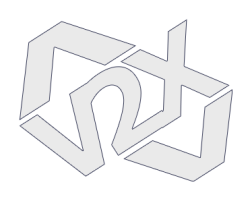As transportation becomes increasingly connected, the demand for faster, more reliable networks has surged. Enter 5G: the technology poised to supercharge V2X (Vehicle-to-Everything) communication. With its ultra-low latency, high-speed data transfer, and massive device-handling capacity, 5G is transforming V2X from a promising concept into a scalable reality. This article delves into how 5G is enabling the evolution of V2X and reshaping the transportation ecosystem.

Why Connectivity Matters in V2X
V2X communication relies on instantaneous data exchange to ensure real-time responses. Applications like collision avoidance, vehicle platooning, and pedestrian safety depend on:
- Low Latency: For immediate responses to potential hazards.
- High Bandwidth: To handle the massive flow of data between vehicles and infrastructure.
- Reliability: To maintain consistent communication in high-density areas.
Traditional networks, like 4G or DSRC, struggle to meet these demands. This is where 5G steps in.
Key Benefits of 5G for V2X
1. Ultra-Low Latency
5G reduces latency to under 1 millisecond, a significant improvement compared to 4G. For V2X, this enables:
- Instantaneous communication between vehicles, crucial for collision avoidance systems.
- Faster processing of environmental data, allowing vehicles to react in real time.
2. Massive Device Connectivity
5G can support up to 1 million connected devices per square kilometer. This ensures seamless communication in:
- Dense urban areas with thousands of connected vehicles and infrastructure units.
- Smart cities where V2X integrates with IoT devices, such as streetlights, sensors, and cameras.
3. High-Speed Data Transmission
With speeds up to 100 times faster than 4G, 5G enables:
- Streaming high-definition maps and real-time video feeds for autonomous navigation.
- Enhanced communication between vehicles and cloud-based systems.
Applications of 5G in V2X
1. Vehicle Platooning
5G allows trucks and cars to travel in tightly coordinated formations, reducing air drag and fuel consumption. Vehicles in a platoon can:
- Communicate their speed and braking in milliseconds.
- Adjust positions seamlessly, even in high-speed conditions.
2. Edge Computing for Autonomous Vehicles
5G reduces dependency on cloud servers by enabling edge computing—processing data closer to the source. For V2X, this means:
- Faster decision-making for self-driving cars.
- Improved reliability in areas with limited cloud access.
3. Augmented Reality (AR) Navigation
With 5G’s high-speed data transfer, AR can overlay real-time information on drivers’ windshields, such as:
- Pedestrian crossing alerts.
- Hazard warnings and navigation guidance.
Real-World Implementations
China’s 5G-V2X Network Trials
China is leading the way with its nationwide rollout of 5G-enabled V2X systems. Results include:
- Reduced accident rates on major highways.
- Successful demonstrations of autonomous vehicle platooning.
U.S. 5G Testbeds
Testbeds in Michigan and California are leveraging 5G to enhance V2X capabilities, focusing on:
- Real-time communication for autonomous vehicles.
- Emergency response coordination.
Europe’s 5G Automotive Association (5GAA)
The 5GAA is advancing V2X through projects like:
- 5G-enabled traffic light optimization.
- Cross-border connectivity for vehicles traveling between European countries.
Challenges of 5G in V2X
Infrastructure Requirements
- Deploying 5G towers and small cells is costly and time-consuming.
- Rural areas may face delays in 5G rollout, limiting V2X reach.
Cost and Accessibility
- The high cost of 5G-compatible devices and vehicles may slow adoption.
- Developing countries might face barriers due to financial constraints.
Interoperability Issues
- Transitioning from existing DSRC systems to 5G networks requires global standardization.
- Compatibility between different automakers’ V2X systems remains a concern.
Future Outlook
The synergy between 5G and V2X will continue to grow as:
- 5G Coverage Expands: More cities and highways adopt the infrastructure needed for widespread implementation.
- Policy and Standards Develop: Global organizations work to create universal V2X protocols.
- Autonomous Vehicles Become Mainstream: 5G is the linchpin for fully autonomous, connected vehicles.
Conclusion
5G is the game-changer V2X technology has been waiting for. By delivering unparalleled speed, reliability, and capacity, 5G is paving the way for safer roads, efficient traffic systems, and smarter cities. While challenges remain, the collaboration between governments, automakers, and tech companies ensures that the 5G-V2X revolution is just beginning.
